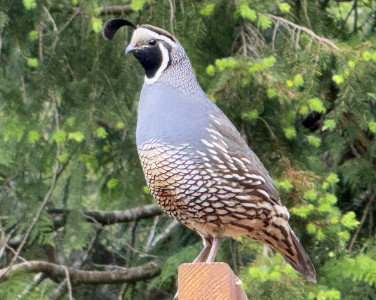 We live in area where we get to see deer, chipmunks, and birds every day, and sometimes also elk and coyotes. (My neighbors have even seen cougars and mountain lions, and one time a local visitor pointed at some poop on a trail by our house and said it was from a bear—but I digress.)
We live in area where we get to see deer, chipmunks, and birds every day, and sometimes also elk and coyotes. (My neighbors have even seen cougars and mountain lions, and one time a local visitor pointed at some poop on a trail by our house and said it was from a bear—but I digress.)
I used to have a blog post with all my critter pics, but as time went on and the number of pics became ridiculous, I split it into multiple posts. This post is for the birds, and I’ll keep adding to it as I get more good bird pics (and videos). I also have other posts where I have my pics of the elk and deer, squirrels and chipmunks, and the coyote.
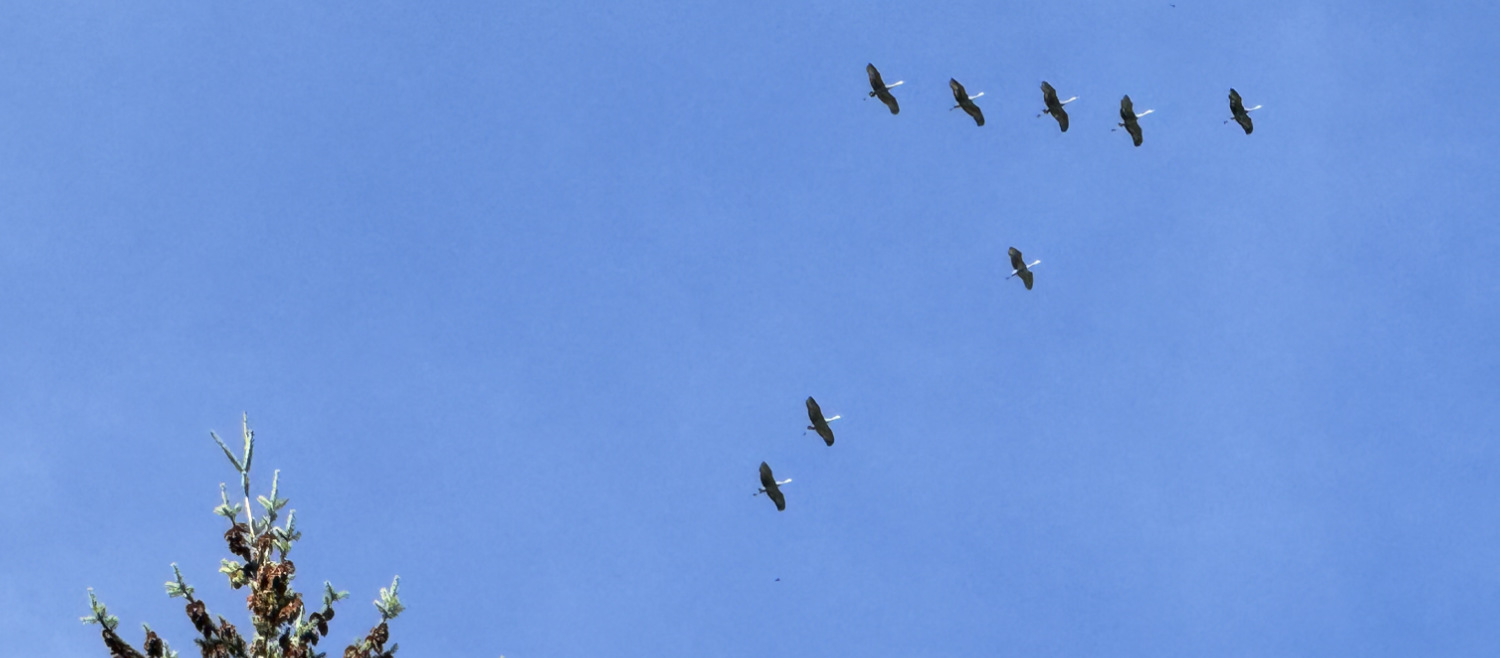
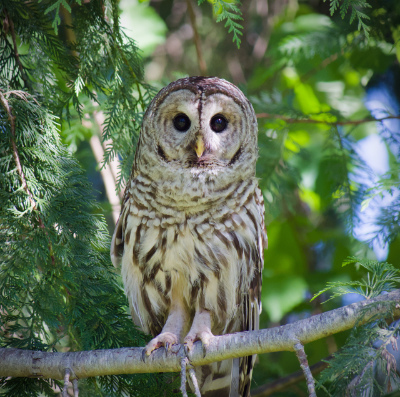 One of the very, very few things that I miss about our home in Beaverton was that we were located right beneath a main highway for migrating Canadian geese. Here in our Clatskanie home we never see the geese, but I’ve seen cranes flying far overhead a few times… but when I say far overhead I mean it: the picture above is zoomed in quite a bit.
One of the very, very few things that I miss about our home in Beaverton was that we were located right beneath a main highway for migrating Canadian geese. Here in our Clatskanie home we never see the geese, but I’ve seen cranes flying far overhead a few times… but when I say far overhead I mean it: the picture above is zoomed in quite a bit.
Most of our experience of the owls is occasionally hearing them, actually seeing them only a few times. I know we have two species here because I’ve heard two distinct types of calls: the typical “hoo” that we all associate with owls, and a dry-raspey screech, which it turns out belongs to the Barred Owl, pictured here. This guy looks to me to be about 16 inches tall and is pretty magnificent. I’m sure he’d love to feast on our squirrels and chipmunks, and I’ve seen him carry off a garter snake.
Dave took the above photo, which is why it is so sharp (not to mention the owl was nicely posing in a less densely-forested area than usual). Below is a photo I took, which shows the neatly camouflaged way that we normally see the owls (on the rare occurrences when we see them at all).
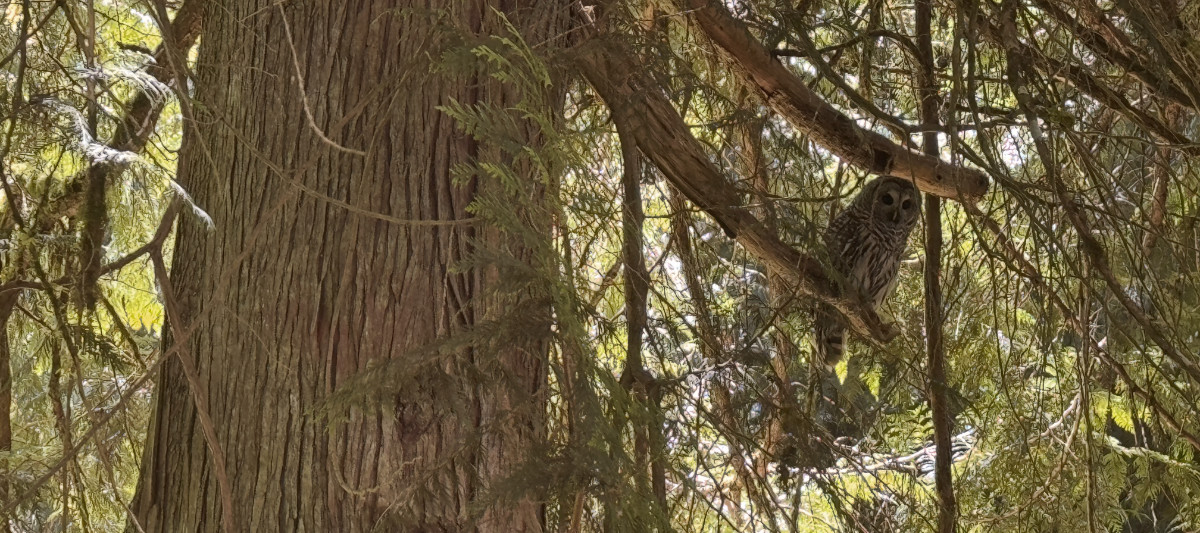
We have seen exactly one Pheasant, and only sometimes see Northern Flickers:
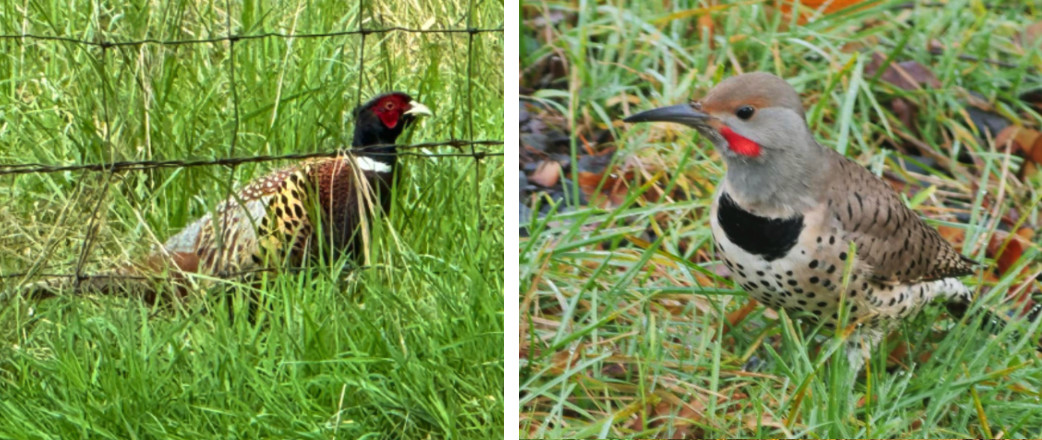
Two other birds that we’ve only seen a few times are the Canada Jay (below on the left) and the Red Winged Blackbird.

We’ve been enjoying seeing quail as well. For the first almost two years here we only saw them running in neighbors’ yards across the street, but they’ve discovered our bird feeder and so visit us now, too.
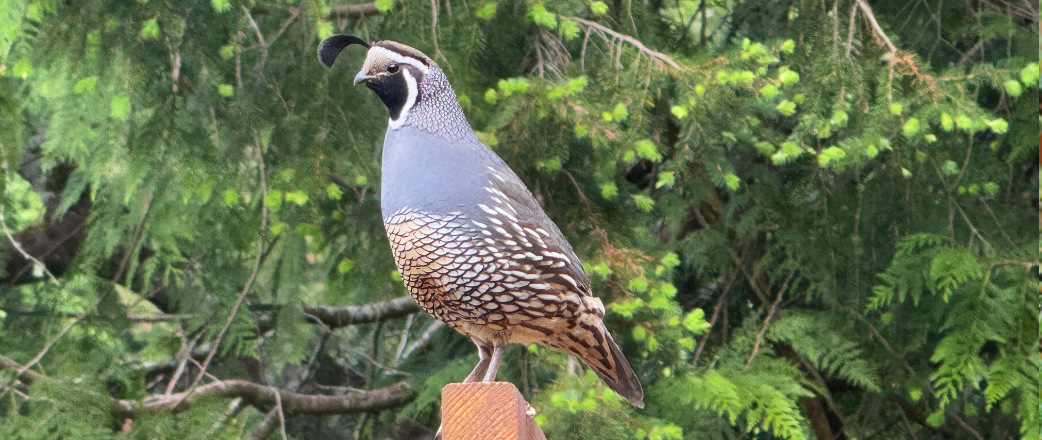
Starting in our second year here, we finally started getting regular visits from the quail couple, and this summer we were delighted to see their new little family:
I love watching the robins as they stand stock still and listen for worms. They always look to me like they are so sure that they are the most badass of the birds. Here’s a photo of a Robin surveying his kingdom, most likely thinking he is master of all he sees.

And here’s a short video of robins taking a bath in the little runoff stream that goes across our front yard:
We also see brown-headed cow birds from time to time (shown below foraging in the [wow-this-needs-to-be-mowed!] grass below our bird feeder with a mourning dove). Here’s the story behind their unusual name.
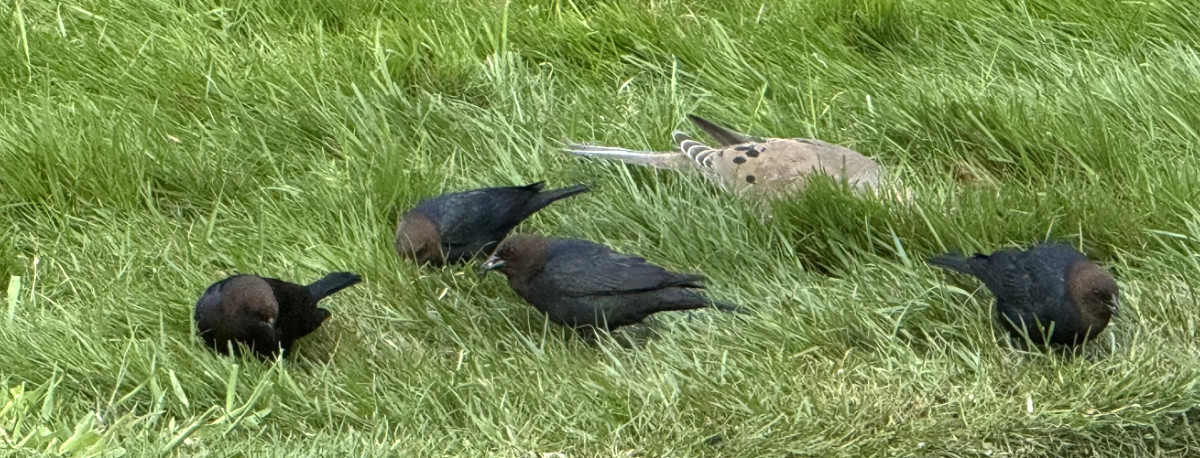
Last summer when I saw a Steller’s Jay spread out on the ground I worried that it was injured, but then I learned about a bird behavior called anting. Fascinating!

We’ve also seen a Red-breasted Sapsucker—but only one time.
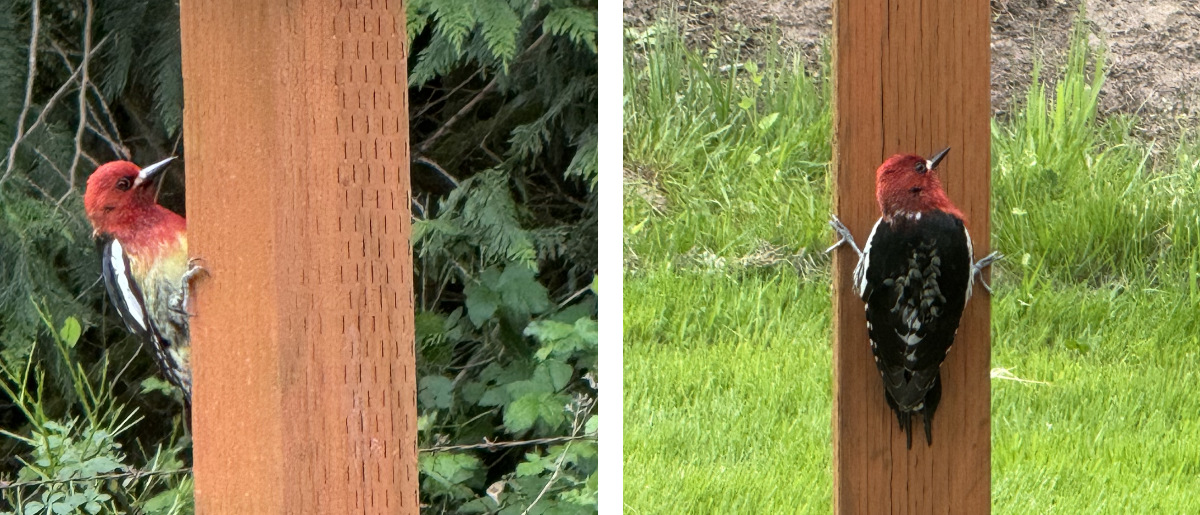
In early summer 2024, Dave put his camera on a tripod and set it up with an app so I could turn the camera on and off from my phone as I sat at my desk (which is in a far corner of our living room with a good view out the window). For two days as I worked on editing client documents, any time I noticed activity at the bird feeder I’d turn the camera on then get back to work, turning the camera off when the activity stopped.
We got some wonderful stills, including this one below of some Grossbeaks (what a name, right?):
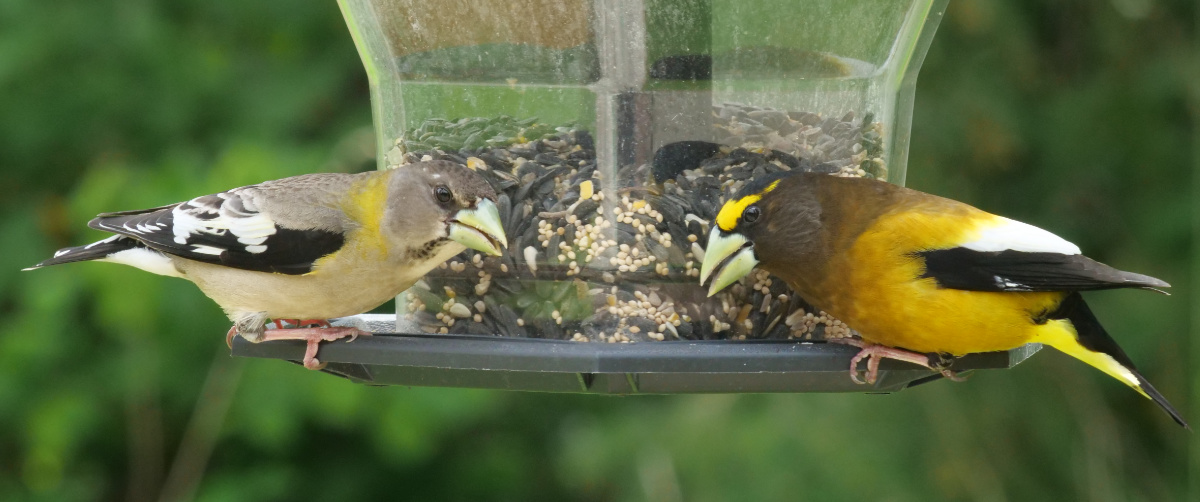
Over those two days we saw 11 different species of birds, although only sic=x are captured in the video. And below is the edited video we posted on YouTube. We imported a soundtrack, as otherwise it mostly would have been of my clacking keyboard.